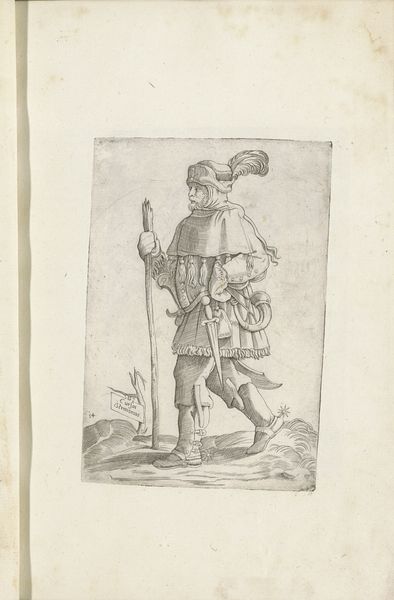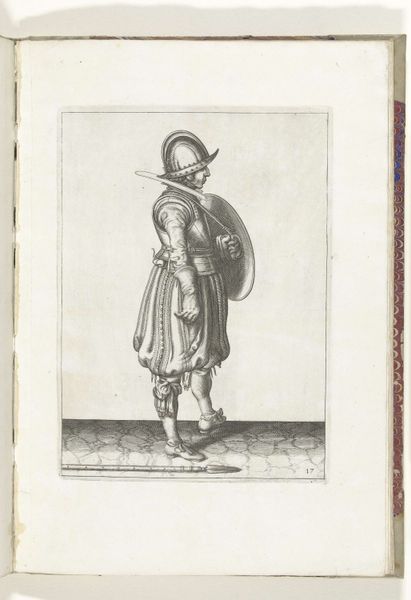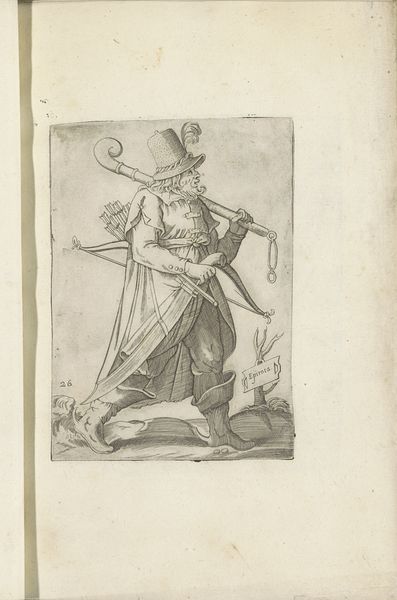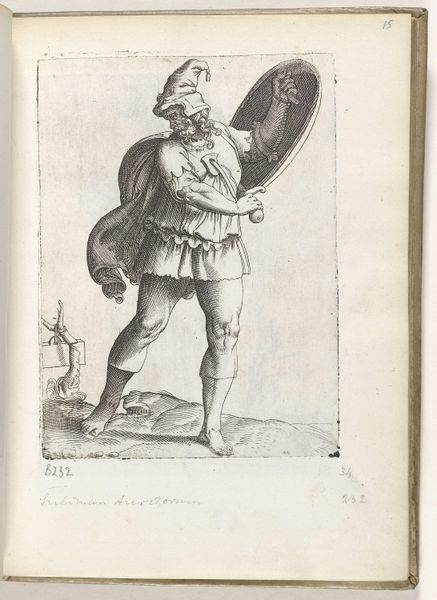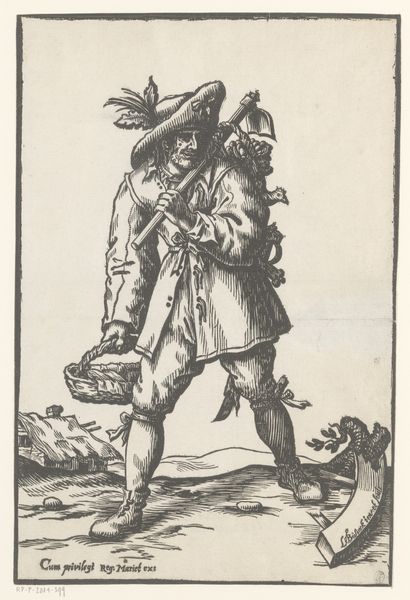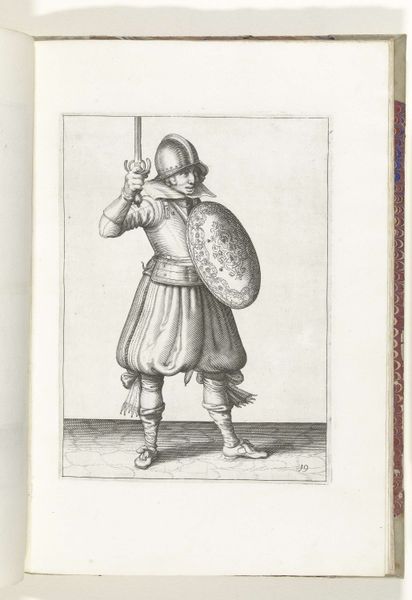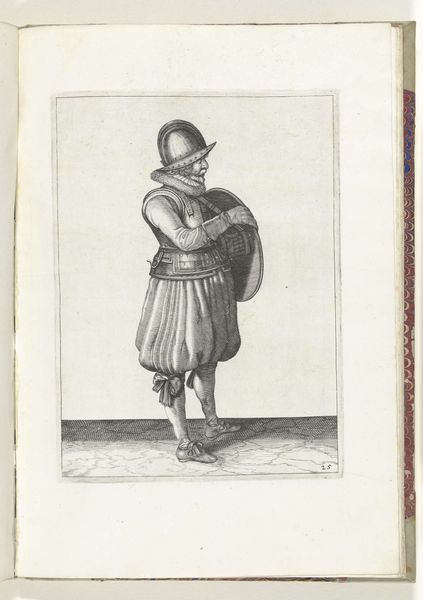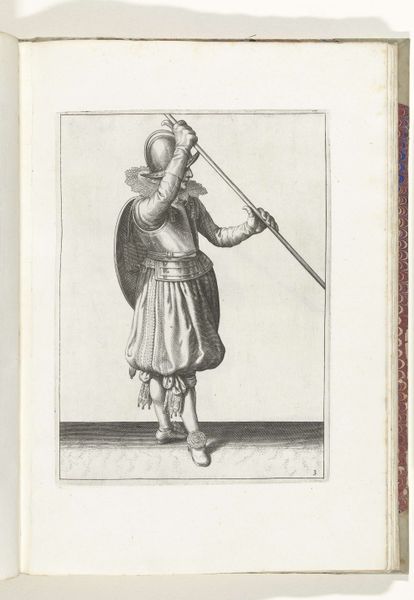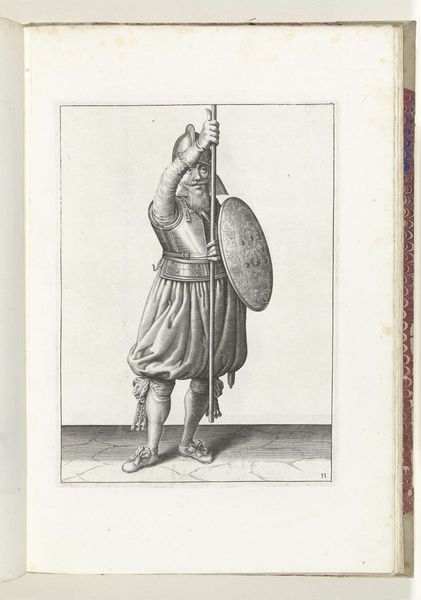
print, engraving
#
portrait
# print
#
mannerism
#
figuration
#
history-painting
#
engraving
Dimensions: height 265 mm, width 195 mm, height 150 mm, width 105 mm
Copyright: Rijks Museum: Open Domain
Editor: Here we have Ferando Bertelli’s "Spaanse of Turkse krijgsman," or "Spanish or Turkish Warrior," from 1569. It's an engraving. He looks a bit precarious with that tiny hat. What jumps out at you when you see this? Curator: Formally, I observe a Mannerist exploration of the human figure. Notice the pronounced musculature, especially in the arms and legs, and the almost decorative use of drapery. The artist prioritized the aesthetic of the form over anatomical accuracy, resulting in a dynamic, albeit somewhat unsettling, image. Editor: Unsettling, how so? Curator: The pose is unstable; the figure's weight distribution seems impossible, defying the basic principles of contrapposto one might expect. This calculated imbalance contributes to a sense of unease. Also, consider the use of line. Notice how the meticulous details of the armor contrast with the more freely rendered cape. What effect do you think that achieves? Editor: I guess the contrast makes the figure seem powerful, but also detached from the background. Like he exists in his own stylized space? Curator: Precisely! The figure isn't interacting with the pictorial space around it. The blank background contributes to this effect. Bertelli is interested in exploring form and technique rather than narrative depth. Even the inscription on the tablet at the bottom is primarily a formal device to balance the composition, than an element of the story. Editor: So, less about who he is, more about *how* he is? That makes sense. Curator: Indeed. The subject becomes a vehicle for the artist to showcase their skill in rendering the human form and intricate details, characteristic of Mannerist ideals. The power isn't in the action; it's in the rendering of muscle and metal. Editor: That was so helpful! I didn't appreciate how much the technique contributed to the unsettling vibe of the piece. Curator: Absolutely! Always ask: how do the visual elements – line, form, composition – convey the artist’s intent, rather than only focusing on *what* the art means.
Comments
No comments
Be the first to comment and join the conversation on the ultimate creative platform.
